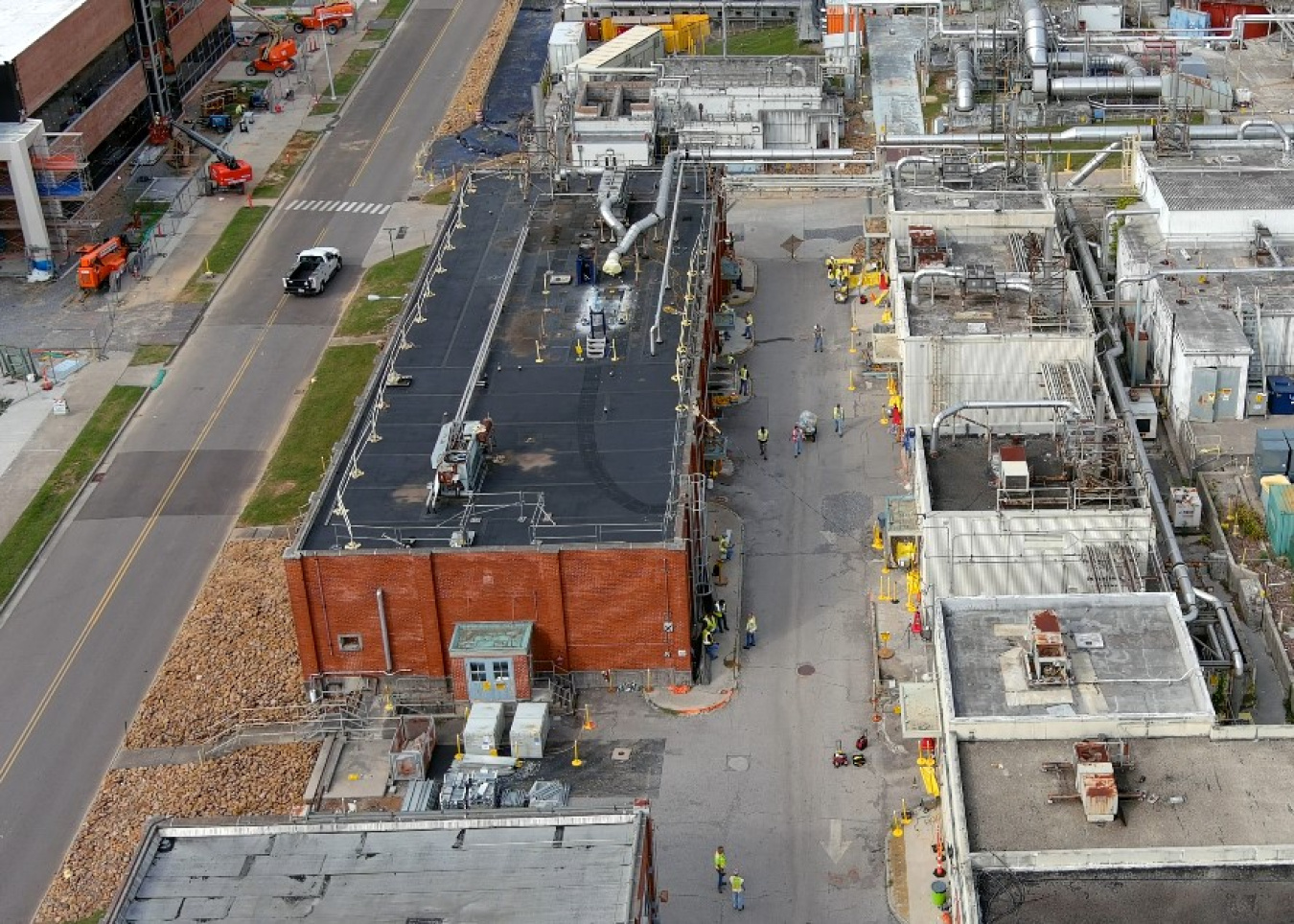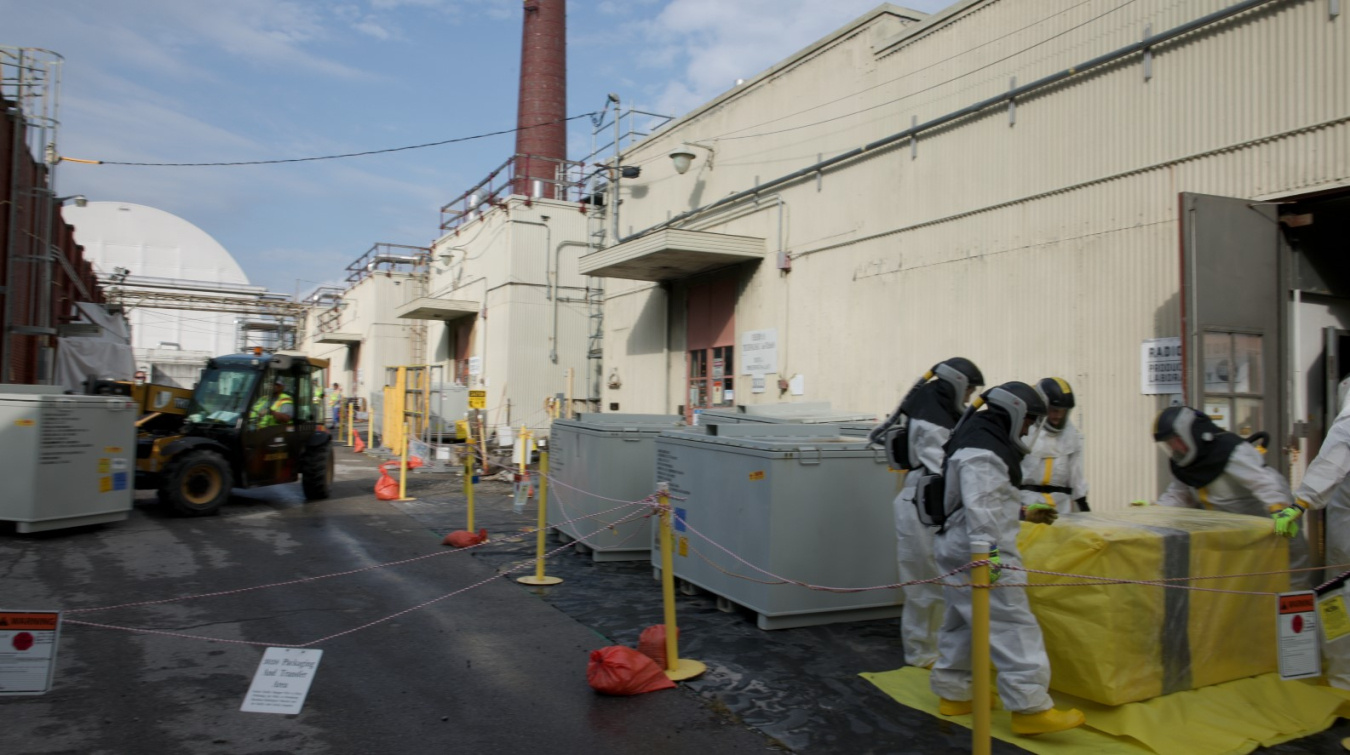EM cleanup to transform national lab, support research and innovation missions. September 16, 2025
Office of Environmental Management
September 16, 2025Workers remove a packaged hot cell from Building 3038 at Oak Ridge National Laboratory. To date, they’ve removed three hot cells, with the remaining two to be withdrawn in coming weeks.
EM cleanup to transform national lab, support research and innovation missions
OAK RIDGE, Tenn. — The Oak Ridge Office of Environmental Management (OREM) and contractor UCOR are advancing projects that will transform Oak Ridge National Laboratory (ORNL) and make space available to support important research and innovation missions.
U.S. Department of Energy Office of Environmental Management (EM) cleanup crews are preparing multiple facilities for demolition in ORNL’s central campus area. They include the former Isotope Development Lab, known as Building 3038, and a collection of 11 highly contaminated former radioisotope processing facilities referred to as Isotope Row.
“The efforts underway now by our employees are laying the foundation for EM to achieve some of its most significant cleanup successes in Oak Ridge over the next year,” said Steve Clemons, ORNL portfolio federal project director.
An aerial view of Building 3038, at left, and Isotope Row, at right. Work underway is reducing risks and supporting efforts to remove highly contaminated facilities located in the central campus of Oak Ridge National Laboratory.
Workers have safely separated all five hot cells inside Building 3038. They’ve removed three of them, and will take out the final two in coming weeks. Clearing away the hot cells is one of the most crucial deactivation tasks to reduce risks inside the structure and prepare the building for demolition. Hot cells are heavily shielded, concrete rooms used to safely contain and manipulate highly radioactive materials.
“This facility posed several challenges that required deliberate and precise approaches to workforce safety,” said UCOR Project Manager William Lloyd. “Building 3038 is deemed one of the most high-risk facilities on the ORNL central campus due to its past and current condition and contents.”
Constructed in 1949, Building 3038 contained equipment used to process, convert and ship radioactive isotopes. For decades, researchers in the facility studied transuranic elements, fabricated targets and sources and produced medical isotopes.
Cleanup crews are performing deactivation tasks inside Isotope Row facilities to prepare them for demolition next year.
Work is also ongoing in Isotope Row to enable near term demolition. These facilities were constructed in the 1950s and 1960s to process radioisotopes. Cleanup crews are completing tasks to remove these highly contaminated structures from the heart of ORNL.
“The adjoining buildings presented a unique set of challenges with extremely hazardous risks requiring highly skilled crews to perform their deactivation duties,” Chad York, UCOR ORNL cleanup area project manager, said.
Most buildings in Isotope Row are in various stages of decontamination activities, pipe and duct removal and radiological surveys. Those activities include removing highly irradiated sources, ventilation system ducts and hot cells.
Demolition is scheduled to begin on the Isotope Row facilities in 2026. Removing these structures eliminates hazards, provides space to support larger demolition projects and opens land for future research missions.
-Contributor: Carol Hendrycks
To receive the latest news and updates about the Office of Environmental Management, submit your e-mail address.




